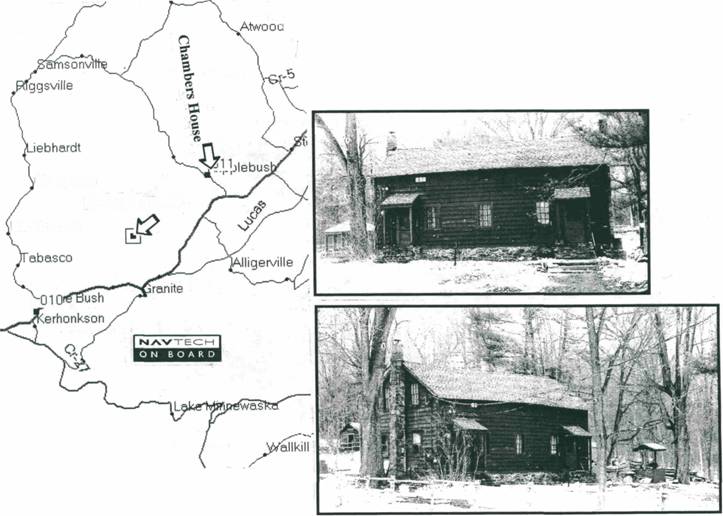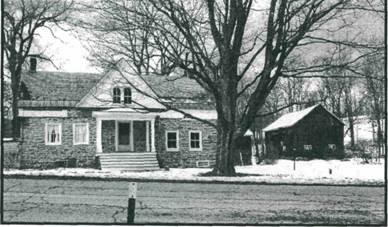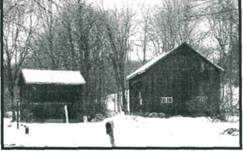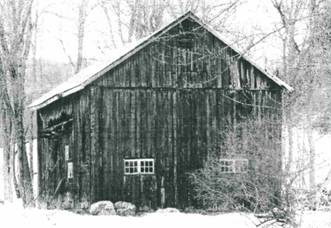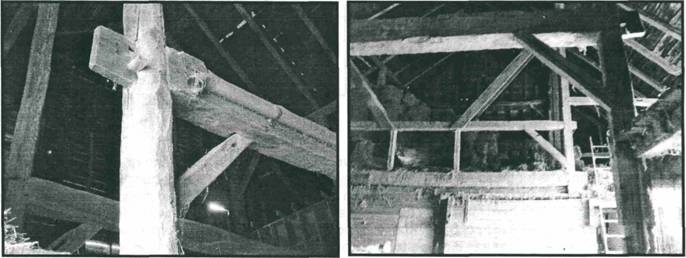|
HVVA
NEWSLETTER, February 2006 FROM
THE JOURNAL
This
two room frame house is thought to date from the 18th century.
There is a stone hearth support for a corner fireplace in the
<-Click for larger view
This was not the English Carpenter Thomas Chambers, known as "Clapboard", who founded the Esopus Colony here in the mid 17th century. Clapboard left no heirs with his surname. It is a later family with the same name, still the use of Thomas may have a connection with Clapboard. The present owners, Jon Boka and his family have done extensive historic research on the ownership of the site and during restoration, while removing the plaster ceilings to expose the original beaded beams, they discovered a large cache of early historic documents, an important collection of inventories, maps and deeds that Jon is in the process of preserving and copying. He believes the house is early 19th century, like 1800.
The 19th century 3-bay English barn, with vertical board-and-batten siding, is situated behind the Chambers house. It has a common plan but an unusual feature in the framing where the tie-beams are not dropped a foot bellow the plates as is usual in the American square-rule frame, but joined between the post and plate. The posts do have raising holes but perhaps this tie beam is an English feature. I am unfamiliar with it in Ulster County. A closer look at this joint would be good.
Friday, December 2, I met with Craig and Patsy Vogel to visit the J. Steiner farm and were iven a tour by Joe Howard, the farm manager. We registered it:
The Steiner 5-bay Dutch barn is a unique example of the New World Dutch barn in transition. Its side entrance is not an anglicizing of the form. It is a development that was adopting to changes in agriculture and the environment. The Steiner barn has a late scribe-rule frame that makes use of a variety of wood types, used parts and long thin columns with lots of wane. Wane is the exposed outer layer of the tree, the sap-wood. It is a good place for taking core samples used in dendro-dating trees and thus dating timbers and timber frames. The presence of wane also indicates that availability of old growth trees was diminishing. Steiner
5-bay Dutch U barn, Red Hook, Dutchess County, NY The
timbers in early Dutch barns and houses in Dutchess County, are
normally of white-oak, have little wane and their dimensions are
rectangular. Later barns use a variety of wood types. The timbers
become less rectangular and squarer, also indicating the builders
inability to find large trees. The Steiner farm is on a very low
flat piece of land that would have lent itself to early settlement
and tree removal. The
barn had a center-bay transverse drive-through. I could find no
evidence of the hinge type for these doors. They have been replaced
by sliding track-hung doors. The two left bays, with anchorbeams
set 12-feet from the floor and animal stalls in the side aisles,
have the classic Dutch barn form used for storing and processing
grain. The two wider right bays have their anchorbeams set 8-feet
from the floor. Bent 4. has a lighter beam joined 4-feet above
the lowered anchorbeam. It allows for mow poles to span the center
bay, and also holds back the mound of loose hay that was supported
on mow poles resting on the lowered anchorbeams. Copyright © 2006. Hudson Valley Vernacular Architecture. All rights reserved. All items on the site are copyrighted. While we welcome you to use the information provided on this web site by copying it, or downloading it; this information is copyrighted and not to be reproduced for distribution, sale, or profit. |
